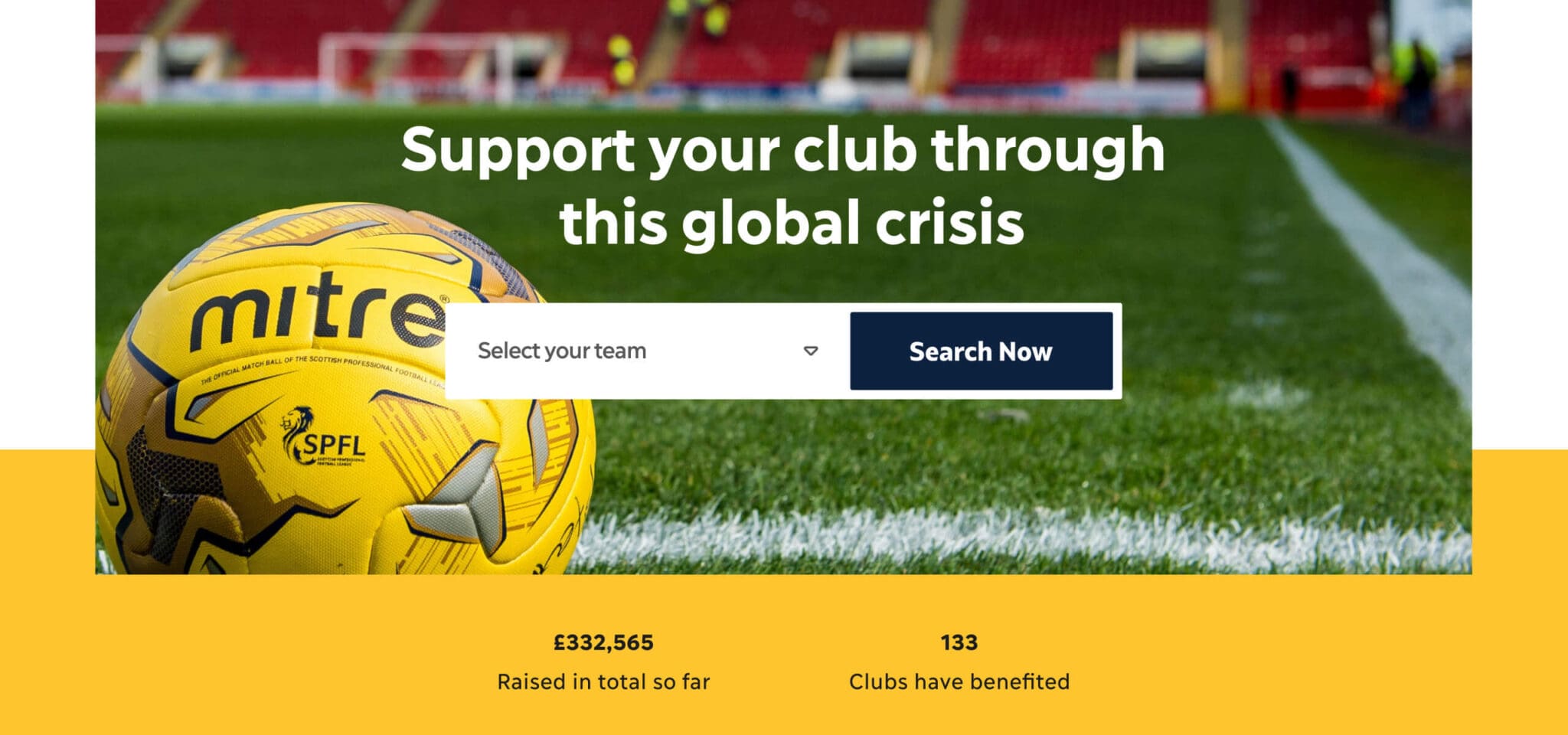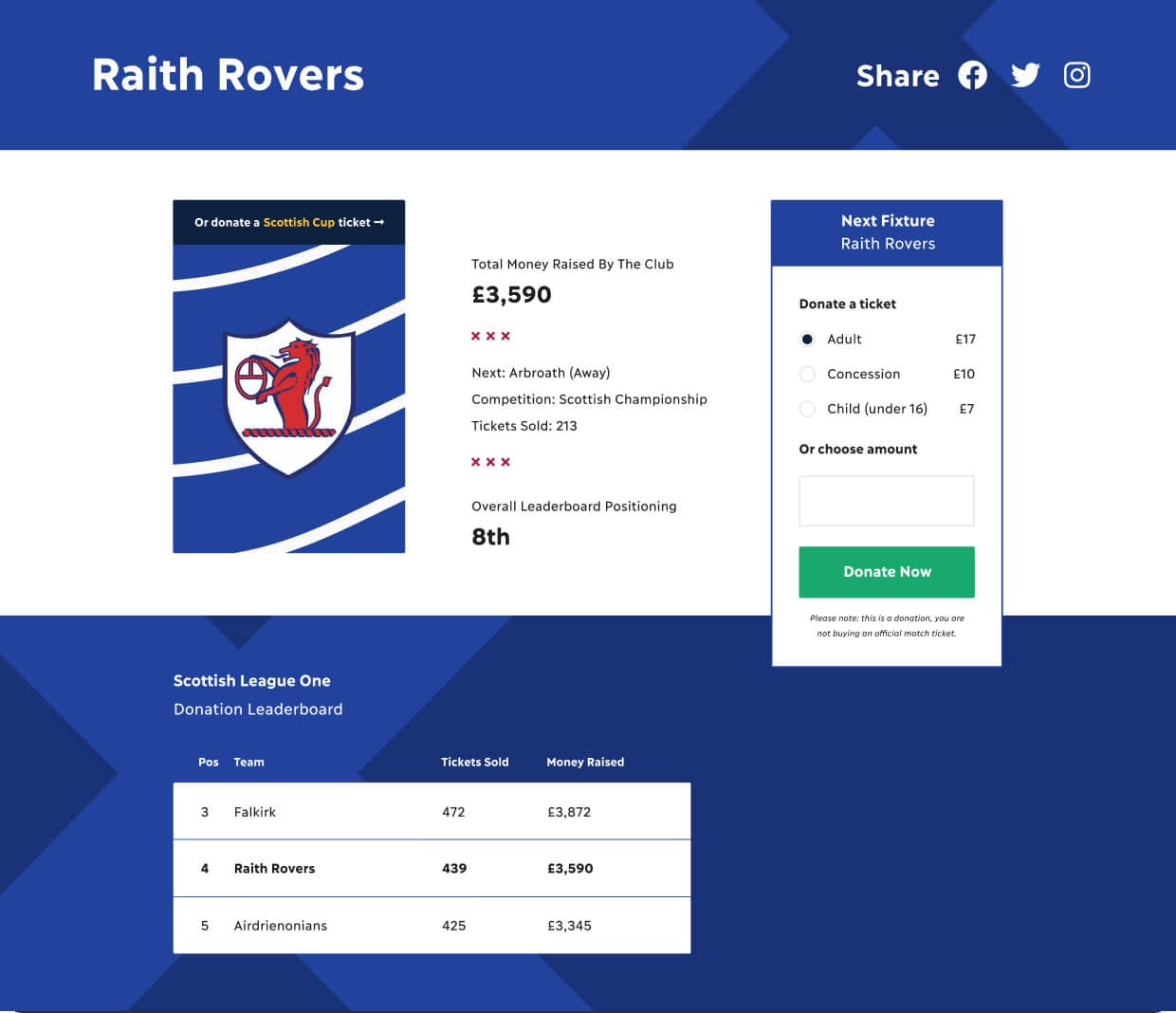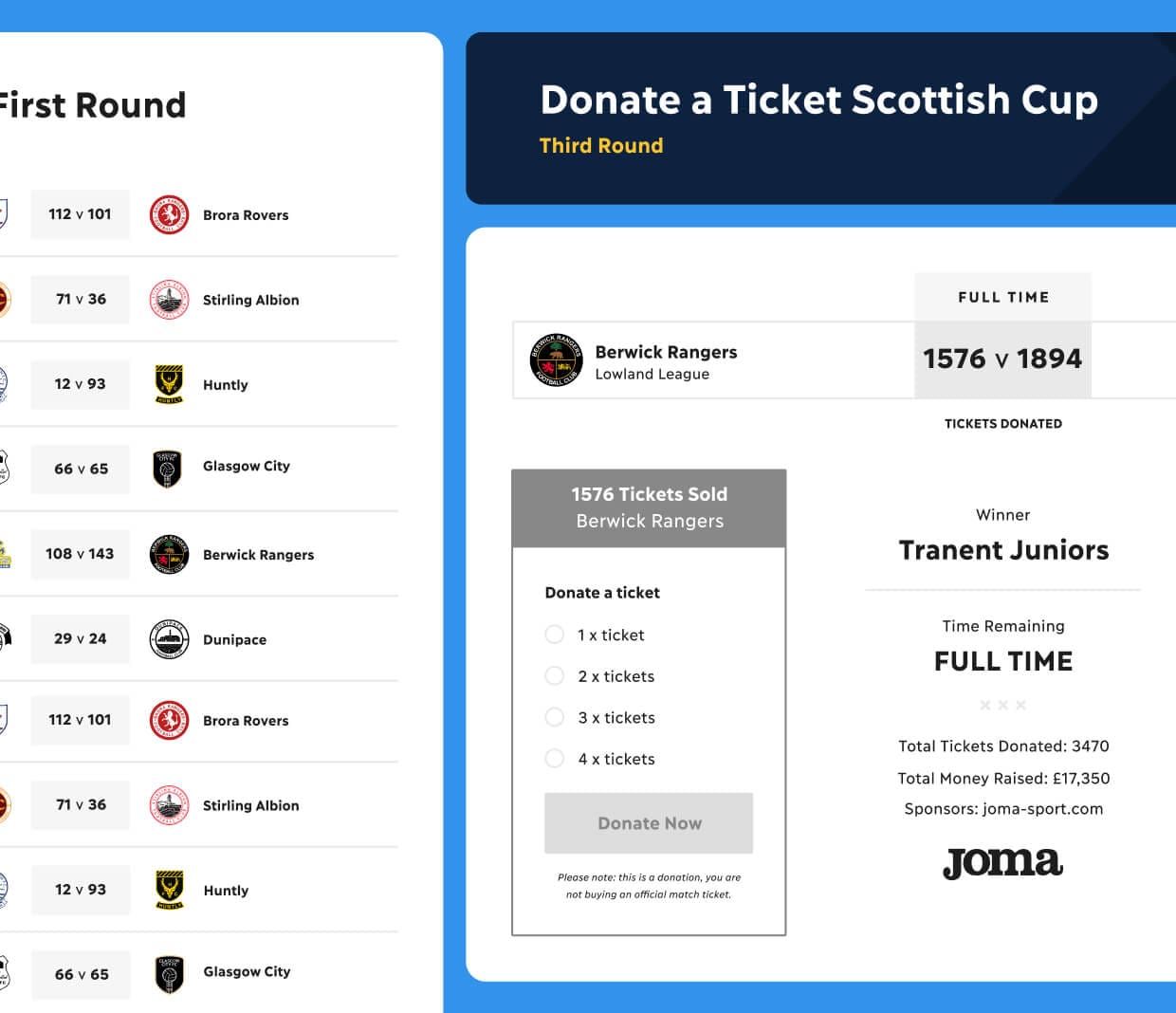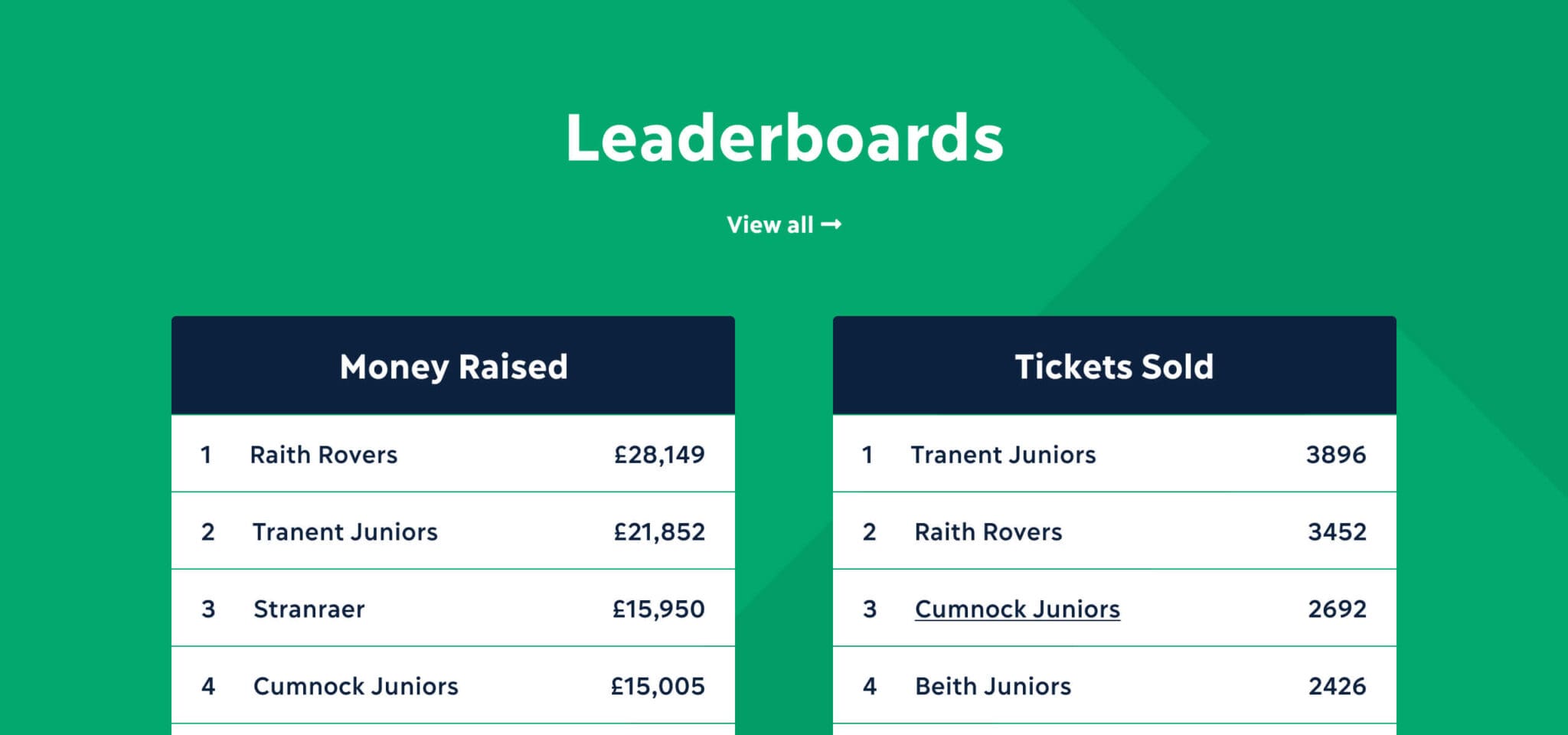Building a fundraising platform to raise over £300,000 during the pandemic.
Donate a Ticket
£331,565
Money Raised
133
Clubs Signed Up
40,284
Virtual Tickets Sold
In March 2020, as the world went into lockdown, football clubs across the UK found themselves grappling with the uncertainty of where funds would come from. With leagues postponed and stadium gates shut indefinitely, the financial future appeared bleak.
At Fanwave, we encountered a similar scenario across most of our brands heavily involved in the sports betting industry. With the absence of major sporting events—unless you had an interest in table tennis or the Belarus Premier League—we had suddenly been starved of anything remotely exciting happening on weekends.
In response, we directed our efforts toward combining our love for football with our in-house expertise, leading to the creation of a new brand called Donate a Ticket, a non-profit project to raise much-needed funds for local football clubs in the UK.

The concept was simple: football fans typically budget between £10 and £20 per week to support their club in the form of tickets and travel. What if they continued this support through regular donations to their club via our platform?
We envisioned a leaderboard showcasing every club, nurturing healthy competition to determine which could raise the most funds. This not only facilitates much-needed financial support for each club but also maintains the competitive spirit that we, as fans, crave and enjoy.
Our UI/UX Designers swiftly crafted a modern, user-friendly website, making it easy for supporters to navigate to each club’s donation page. Donors could choose from preset amounts or enter a custom sum. To add excitement, we introduced two leaderboards: one for virtual tickets sold and another for total funds raised.
The development team then brought the design to life with a custom WordPress website, using a fundraising plugin to speed up the process. We prioritized speed to launch the site quickly and kickstart fundraising.
Simultaneously, our social media team began building the brand’s online presence from the outset, initially on Twitter. The social media team also played an important role in engaging with football clubs, offering our service at no cost to them and loading them onto the platform.


Throughout its 12-month existence, the platform introduced several innovations. Alongside the competitive leaderboard feature, we launched a virtual cup knockout competition named ‘The Donate a Ticket Cup.’
The aim was to maintain competitiveness between clubs through a knockout cup format involving 32 teams. Clubs were paired off and given 72 hours to outdo their opponents in fundraising, with the victors advancing to the next stage. Remarkably, in the Final between Beith and Tranent, £9,170 was raised from 1,834 donations.
Implementing this innovation necessitated additional design and development efforts, all at no cost to the participating football clubs. The total funds raised from the knockout competition amounted to £69,075, across 32 clubs.
David Innes, Tranent chairman, expressed gratitude, stating, “It’s been immensely beneficial for the clubs, especially now as we resume playing but are unable to welcome fans back into the stadiums. Financially, it’s been a challenging time, and the support from fans has made a significant difference. We’ve received approximately £20,000 from this initiative, enough to cover the wages of about 10 players for a year.”
Bill Clark, director of Raith Rovers, echoed these sentiments, describing the fundraiser as ‘invaluable.’ He remarked, “It’s been a tremendously imaginative and effective way to raise funds. Undoubtedly, this support has been crucial for our survival, and we’re deeply appreciative of all the fans who contributed.”
This project became a focal point for our business during a period when many others were downsizing or furloughing their workforce. Instead, we redirected our resources into a project that brought tangible benefits to small community football clubs throughout the UK.





